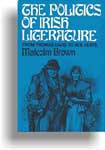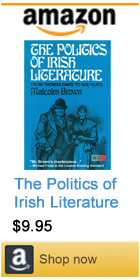Chapter Thirteen
'The Year for Action'
THE POLICE RAIDS on the Irish People failed to catch James Stephens. The most-wanted Fenian bird had flown past those nets. It was generally supposed that he would appear next morning at the head of his men on barricades in College Green, and A. M. Sullivan informed his brother that they would certainly see the signal for a rising "ere twenty-four hours." The Dublin garrison was called out at three in the morning, while artillery and more infantry rushed in from the Cork and Fermoy garrisons. But there was no insurrection that morning nor in the morning that followed. Meanwhile Stephens could not be apprehended. Police searched trains and ships, questioned travelers, investigated every oddity of garment or facial ornament that suggested a disguise. All their leads led nowhere, and they concluded that he must have escaped to America.
All the while Stephens was not exactly under the nose of the police, as the saying is, but was approximately so, being only an easy stroll from Dublin Castle. He was living quietly in Fairfield House, Sandymount, without false whiskers or nun's habit, but simply as himself, though he went under the name of "Mr. Herbert," a keen horticultural enthusiast who was sometimes seen by the neighbors puttering about his greenhouse. On the day after the raids he sent off a letter to O'Mahony in New York reporting correctly that "the enemy is in a rage, and striking like a madman. Like a madman, for, as far as I can yet see, he is much in the dark."' He had outsmarted the police, but his exploit had not solved any of his own crushing problems.
Stephens' followers groped in the same dark as his enemy. His membership was awaiting some sort of instructions. The letter to New York reported "They sent a party in search of me, in order to know what should be done." All he could tell them was just to go home. He had often called Smith O'Brien a clumsy amateur; now in his own first crisis he found professionalism harder than he had supposed. His army had been reduced back to polyps by the sudden disappearance of the solitary center of intelligence and command. Sullivan might think that insurrection was inevitable, but Stephens knew it was impossible. "Had we been prepared," he wrote O'Mahony, "last night would have marked an epoch in our history. But we were not prepared. . . ."
Stephens stayed in hiding in Sandymount for nearly two months. The proven elusiveness of the mysterious revolutionist caught the fancy of many Irishmen who had avoided all previous traffic with Fenianism. Weird rumors and alarms succeeded one another. Rumor said that Stephens scorned arrest because there was no jail in Ireland strong enough to hold him. Rumor said that O'Leary, Luby, Rossa, and the other prisoners had nothing to fear, for they would soon be wearing the ermine and the wig, while judge and prosecutor would be cringing in the dock. Then the police discovered the hiding place. They surrounded Fairfield House at dawn on November 11, 1865, and captured Stephens in his nightshirt, together with Kickham, Edward Duffy (the tubercular head center for Connaught), two thousand pounds in cash, and large siege stores of food and drink.
A few days after capture, Stephens was brought under heavy guard to the Castle Yard for arraignment before a magistrate. The streets were full of curious Dubliners trying to get a glimpse of the modern Eamonn an Chnuic inside the Sassenachs' prison van. The nobs and their ladies from the Viceregal Lodge had reserved seats in the courtroom for a close but safe view of their quarry. Stephens listened to the clerk read his incriminating Clonmel letter, and at the phrase that 1865 must be the year of action he commented loudly, to the surprise of his distinguished listeners, "So it may be." Asked if he would enter a plea, he declined because, he said, to do so would recognize British law in Ireland: "Now I deliberately and conscientiously repudiate the existence of that law in Ireland. I defy and despise any punishment it can inflict on me. I have spoken."2 This little speech was as close as Stephens would ever come to adding his chapter to the impressive genre of Irish jail literature. For his great state trial for treason, which was to scotch the rebellion and send its indispensable leader to prison, never came to pass.
II
Richmond jail was strong enough to hold Stephens exactly two weeks. Among the sworn Fenians in Dublin was a jailer named Daniel Byrne, whose duty it was to patrol the Richmond corridors after midnight. He had a friend, John Breslin, working in the prison hospital as a pharmacist, who was allowed free access to all parts of the jail in order to report on the illness of prisoners and to deliver medicine to the cells. His dispensary duties brought him to Stephens' cell for consultation unusually often. Their subject was not the prisoner's health, but the architecture of the building. Between Stephens and his freedom stood the locked door of his cell, at the end of the main corridor a locked door giving on the stairs that led outside, an inner prison wall, and a very high outside wall. There were also the regular patrols of the night, and as an extra precaution the warden had put a jailbird in the cell between Stephens and Kickham and provided him with a gong that he was commanded to ring if he heard anything peculiar happening next door. All these difficulties seemed surmountable. The problem of the locked doors was to be solved by making a beeswax imprint of the master keys, from which a Fenian locksmith could file passkeys. The inner wall was to be scaled by a ladder that Byrne would leave negligently nearby. The outer wall required friends on the outside with a rope ladder, one end to be anchored outside, the other end to be tossed on signal over the wall to Stephens...
|
|
Table of Contents
|

|
Astonisher.com is pleased to offer these excerpts from The Politics of Irish Literature by Malcolm Brown...
Praise for
The Politics of Irish Literature |
 |
|
"This brilliant study of the intersection of politics and literature in Ireland amounts to a dazzling portrait gallery. Reading it one feels about one the breath, warmth, and passions of the dead all come alive again."
-- Sean O'Faolain in the Manchester Guardian
"Mr. Brown's masterpiece has made me want to hire a nearby housetop and recite whole chunks to every passerby..."
-- Michael Foote in the London Evening Standard
"The author of the best book on George Moore now gives us what is in all likelihood the best book on the politics of modern Irish literature."
-- Virginia Quarterly Review
|
|

University of Washington Professor Malcolm J. Brown (1910 - 1992) with his son, Bruce Brown, in Sumas, WA, July 1988.
|
Additional reading -- Malcolm Brown's George Moore: A Reconsideration. Also see Bruce Brown's commentary on The History of the Corporation for Malcolm Brown's contribution to that work.
|
|
|






